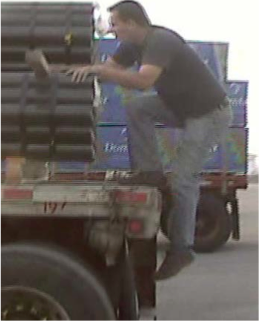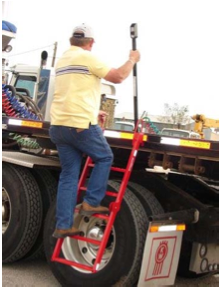Concern details
Injuries from falls from trailers and getting on and off the trailer are a prominent concern in the transportation sector [1, 2]. A study that analyzed injury claims of falls from trucks as recorded in the database of the Ontario Workplace Safety and Insurance Board (WSIB) for the year 1997 identified 352 claims which involved a fall which occurred from a truck, trailer or the cargo, and the costs associated with the 352 claims was over 5 million dollars [2]. Of these cases, 50% were falls from the back or side of the trailer.
Flatbed truck drivers are frequently required to climb on the trailer and load. Drivers often climb on the load without adequate fall protection as the site or customer often do not have a fall arrest system provided for tarping or the trailer and load geometry do not permit it [1]. Additionally, workers are very susceptible to environmental conditions such as wind, rain, cold and snow.
Getting on and off a trailer is difficult, and it poses a hazard because the trailer has few, if any, handholds, inadequate steps, and slippery surfaces. Although the use of three-point contact during climbing is advocated in the transportation industry training, it is often not possible. Getting off the load and trailer is often achieved by drivers jumping down because it is the quickest means to get down and there is no method incorporated to safely get off using three-point contact. Jumping from elevated surfaces creates high impact forces which transfer high loads to the joints and also increases the potential of slips and falls immediately after landing.

Countermeasures
Worker:
- When possible load and unload trailers at docks which are same height as trailers.
- Do not jump! Turn around and climb down using three-point contact as much as possible.
Company:
- Place an extra step, fold out step, or ramp at the back to assist with climbing. Ensure ramps and ramps have adequate grating to prevent slips and falls.

Add hand holds to ensure 3-point contact and assist with climbing up:
- Grab handles.
- Holes in the floor for hand holds.
- Rope or strap hanging from ceiling to use to help pull up.
- Use a deckmate ladder to climb onto trailer anywhere along side of a flatbed trailer.

- Design catwalks and trailer headboards with grab handles and steps that have smaller distance between steps with adequate grating on step, especially front edge of step to reduce slippage.
References